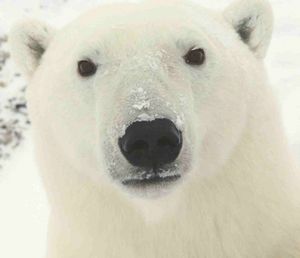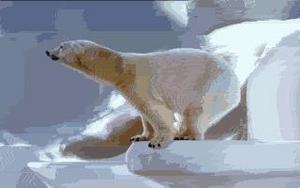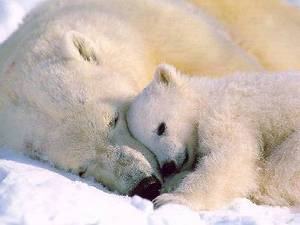The Canadian Eskimo Dog, or Qimmiq as originally called by the Thule people, is considered one of the oldest and rarest indigenous purebreds in North America.
History
Around 2000 years ago, the Thule Inuit people from Greenland, made Canada’s Arctic Region their home. With them they brought their dogs, who were vital to everyday living.
The Canadian Eskimo Dog was used for hauling sleds, packing, transportation, to locate breathing holes for seals, as well as for protection against polar bears and ox.
Being able to survive in some of the harshest, and roughest terrain in the world, made this breed incredible popular for expedition use, in the 1800s and early 1900s. Having stood at both the South Pole and the North Pole, this beautiful breed of dog has worked for many famous names in Arctic and Antarctic exploration.
In the 1950s, around 20,000 Canadian Eskimo Dogs were living in Northern Canada and the breed had been accepted by both the American Kennel Club (AKC) and the Canadian Kennel Club (CKC). The use of snowmobiles became popular over using dogs, as they were faster and required less care. This aided in the decline of the breed.
In 1959 the AKC dropped the Canadian Eskimo Dog from its registry because there were so few dogs. The CKC only had one Eskimo Dog registered in 1963. At the time of its death, there were still no others listed.
In 1972, William Carpenter and John McGrath founded the Eskimo Dog Research Foundation (EDRF). The EDRF bought some of the few Canadian Eskimo Dogs from remote Inuit camps and began breeding them, in efforts to increase their numbers.
Even with the efforts of the EDRF, the Canadian Eskimo Dog population is still very low, with less than 300 registered dogs. The breed was officially adopted by the Canadian territory of Nunavut, on May 1st, 2000, as the animal symbol of the territory.
Description
The Canadian Eskimo Dog is a powerful breed of dog. they have thick necks, a broad chest and thick. strong muscular legs. Their triangle shaped ears are erect and their thick, full tails are carried over their backs. these are rather common traits of Spitz breeds. The most common eye color for the Eskimo Dog are yellow, black and dark brown.
Males are more masculine than the females, who are finer boned. The average weight for a male Canadian Eskimo Dog is between 70 and 90 pounds and they stand 23 to 28 inches at the withers. The females weight between 40 and 66 pounds and stand 19 to 24 inches high at the withers.
Coat
The coat of the Canadian Eskimo Dog is a completely weather proof, very thick, long, double coat. The outer coat is very dense, thick and long, while the undercoat is soft with coarse, stiff guard hairs and is a little shorter than the outer coat. Males have a thick, fur mane around their necks, making them appear larger, while the females have a smaller mane.
The Eskimo Dogs are almost any color or color patter. Colors and color combinations often include sable, gray, black, liver, white, brown, red/white, red/buff, black/white and a white body with patches on the head. Many solid colored dogs sometimes have markings on their face, like a mask, or spots over the eyes, while some have white socks and stripes on their nose.
Grooming the Canadian Eskimo Dog is a rather simple chore, as it only needs to be done once or twice a week, with a firm bristle brush. This breed only sheds once a year and during this time, should have daily grooming.
Temperament
Canadian Eskimo Dogs are brave, alert, intelligent and affectionate. They make wonderful companions and develop a deep, strong bond with its owner. Although they are good with children they are best for an adult, who can provide firm, but gently training. They like to play, but can get over excited.
Living Conditions
Canadian Eskimo Dogs do great is most climates, although they do enjoy cold weather. When in colder climates they may want to sleep outside in the cold. This breed is prone to heatstroke.
They need plenty of room to run and exercise, sometimes more than what the owner can give. Walking does not always satisfy the dog and a higher intensity activity is required.
Health and Life Expectancy
The Canadian Eskimo Dog is a healthy breed of dog although they are susceptible to transmittable diseases. Their life expectancy is around 10 years.
sources:
www.canadianeskimodog.com
www.heydogs.com
wikipedia online




